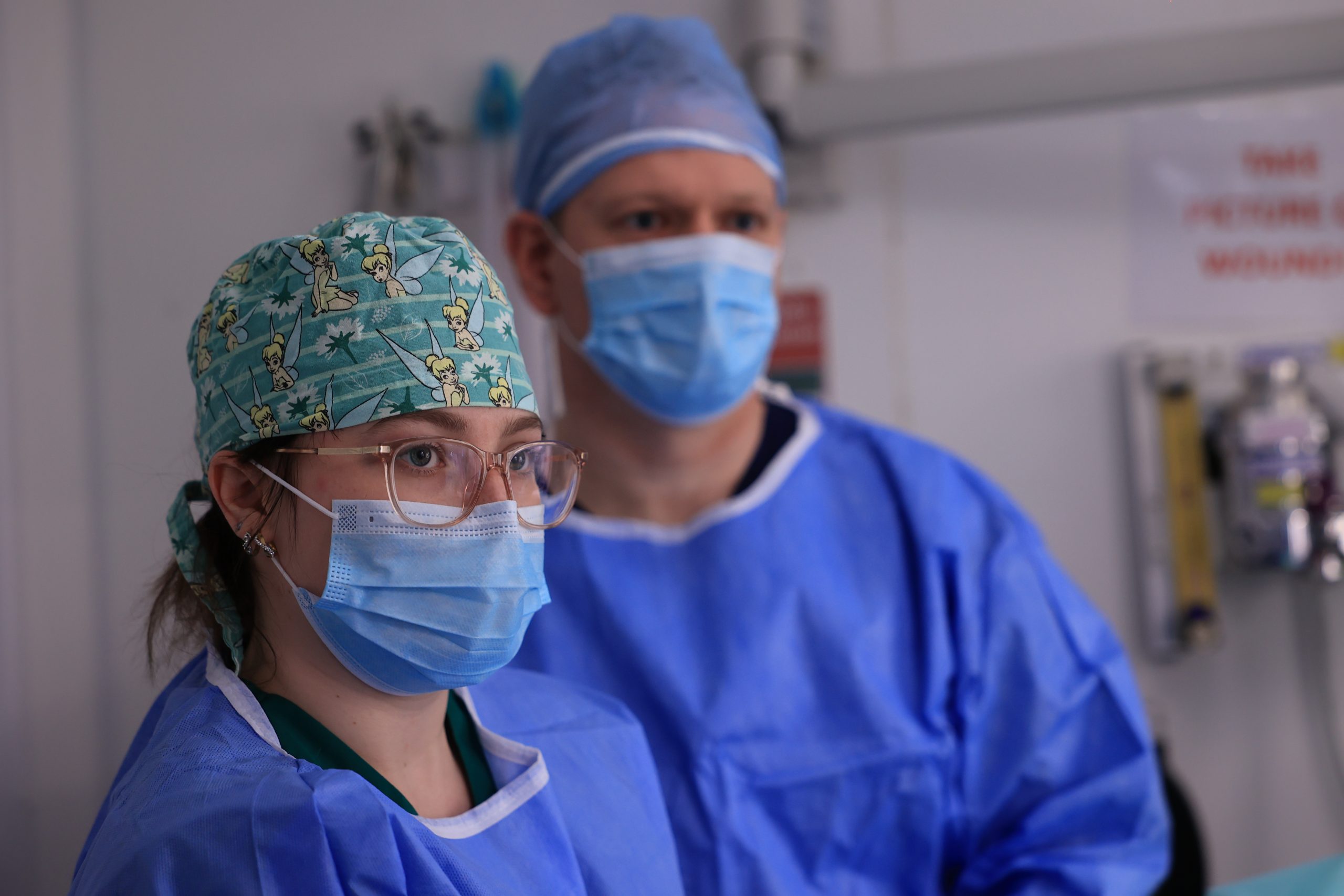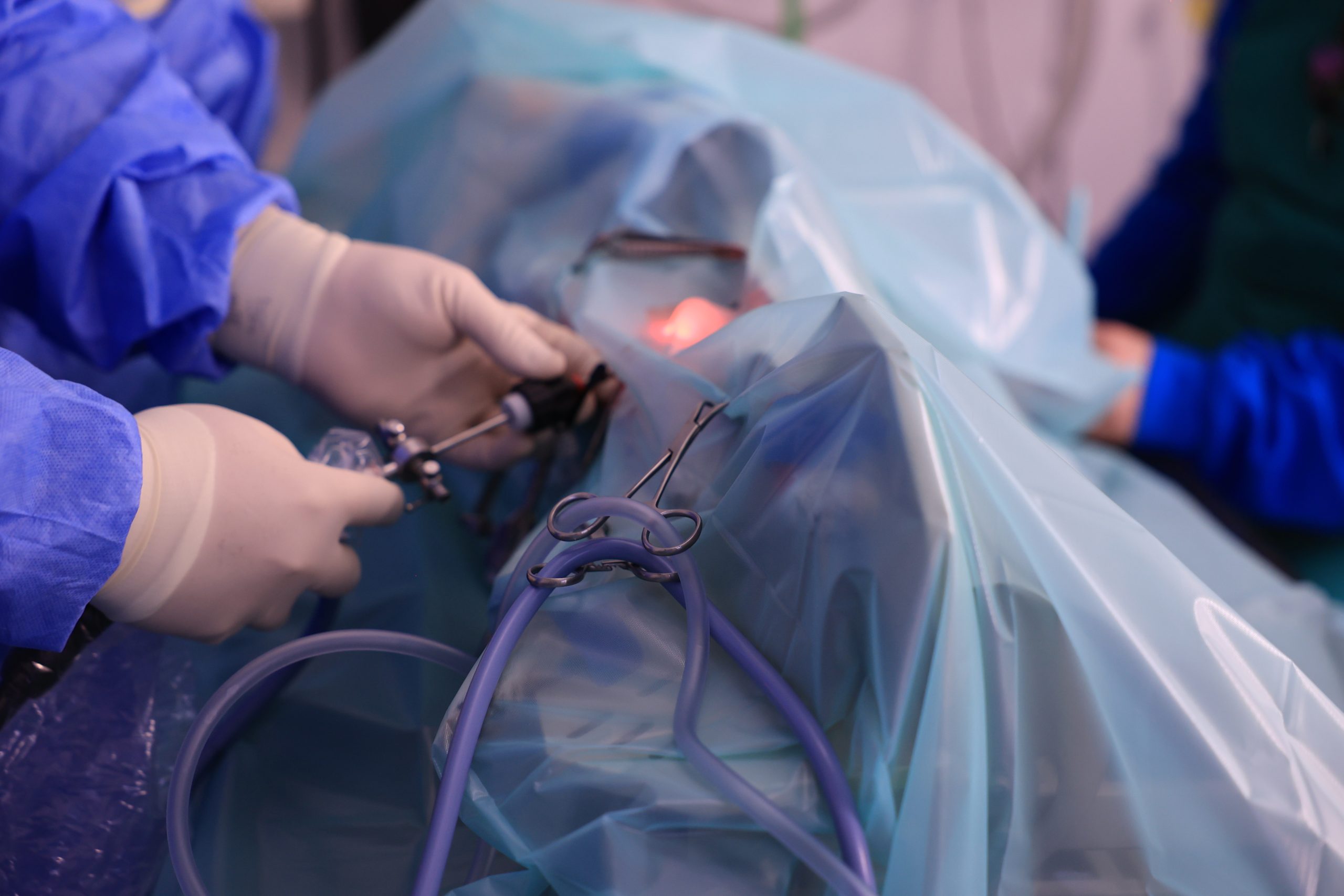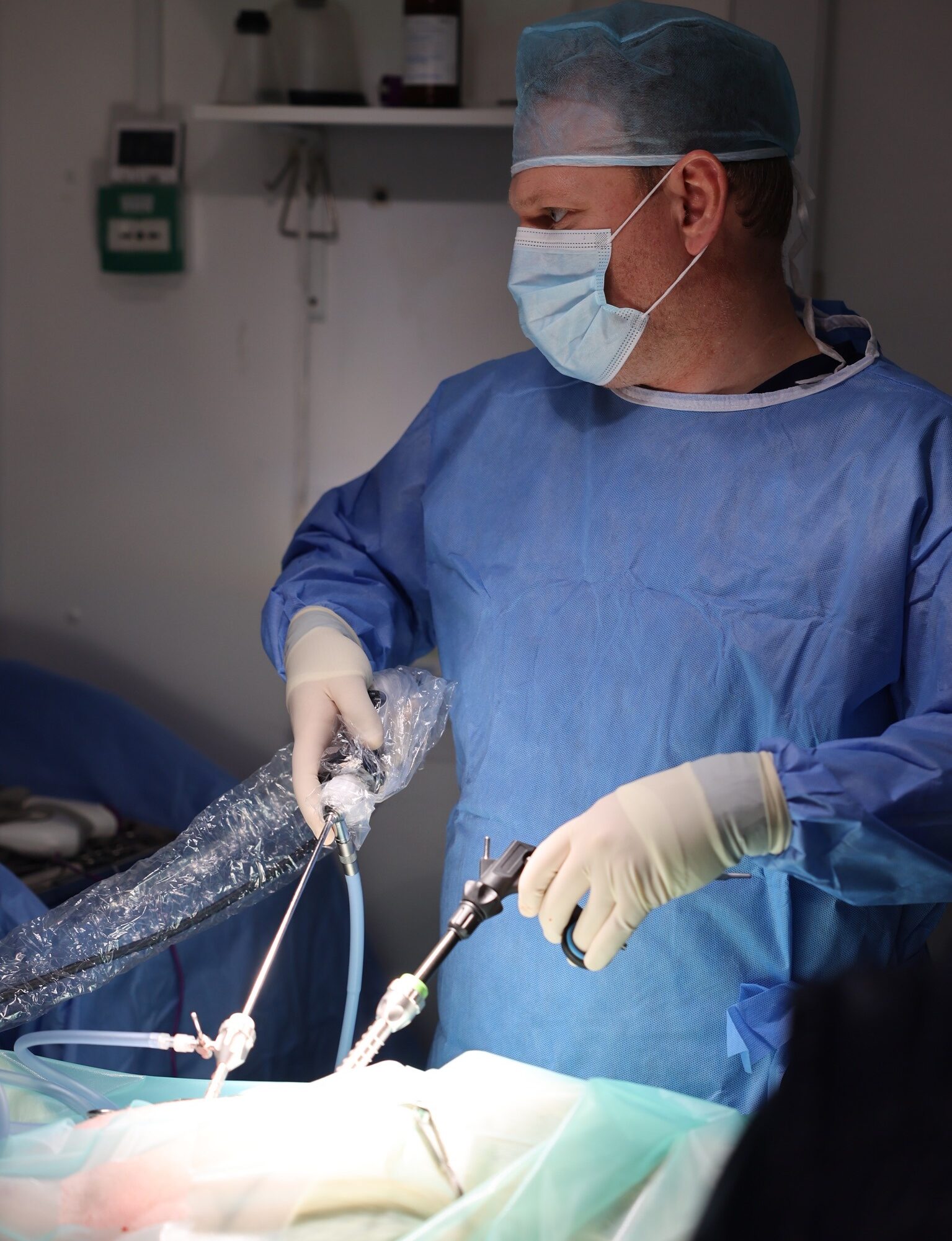What Is A Laparocopy Spay?
A laparoscopic spay or neuter is an alternative to the traditional method. It is less invasive and allows faster recovery time.
In a laparoscopic spay, your female dog will have her ovaries removed with a camera and vessel-sealing device through a keyhole incision (ovariectomy).
What Are The Benefits Of A Keyhole Spay
The main benefits of a laparoscopic spay are less pain and a faster healing time than the traditional spay operation.
SMALLER INCISION
Smaller scar, faster to heal, less discomfort.
DECREASED RISK
Decreased risk of postoperative complications.
REDUCED TRAUMA
Only the ovaries are removed, resulting in less postoperative tummy trauma.
MINIMAL STITCHES
Less discomfort and licking of the wound.
SAFER
It is a safer and less invasive method of surgery.
When Do We Use Keyhole Surgery?
We offer keyhole surgery as an option when neutering your female pet. This is often the best choice as smaller incisions and fewer stitches mean that your pet should be back on her feet as soon as possible, experiencing less disruption and discomfort.
Keyhole surgery can also be used in a number of other surgeries.
How Is A Keyhole Spay Performed?
The laparoscopic technique requires only 2-3 very small incisions to be made; typically they are just half a centimetre in size, allowing for the insertion of a camera and instruments.
The procedure is performed with magnified views of the organs allowing maximum precision and minimal invasion and trauma.
As only the ovaries are removed (ovariectomy) this shortens the surgical time and reduces the risks involved; there is no evidence of any advantage of removing a healthy uterus.
Need To Discuss?
What Are The Benefits Compared To A Traditional Spay?
Let’s Take A Look…
SMALLER WOUND
The wounds of the laparoscopic approach are minimal, around 1 cm compared to 6-15cm of a traditional spay. So there is a decreased amount of postoperative wound complications.
PRECISION
Direct access to the ovaries significantly decreases tissue trauma, pain, bleeding and bruising to your pet’s internal organs and muscles.
REDUCED RISK OF INFECTION
Due to the combination of smaller incisions and reduced tissue traction, your pet is less prone to infection.
LESS POSTOPERATIVE PAIN & SCARRING
Laparoscopic spay research found that there is 65% less pain compared to a traditional spay. As the incision site is much smaller, this also means there is less scarring and less painful healing.
FASTER RECOVERY
Reduced pain and fast healing means your pet can return to their normal activities 5 days later compared to a traditional spy which is two weeks.




